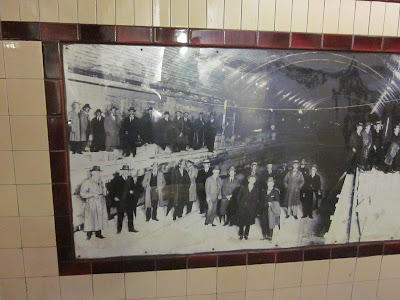Freddie Salzburg's Animal Fondue Rotisserie has been in business in Mankato, Minnesota in the USA since November 2008. The restaurant features whole pigs and lambs slaughtered on the premises, and cooked by being lowered by a crane mechanism into boiling vats of molten cheese.
| The entrance to the Animal Fondue Rotisserie. "We hadn't meant to have such a grand entrance," said proprietor, Freddie Salzburg. "The original plan was for a feature here that customers could take advantage of a feature we were going to build in here, that involved a large air cannon, a razor-edged grating, with a heated angled cheese tub. We had to adapt our plans while we let the applications go through." Photograph taken for the avlxyz review service. |
©2010 James Mathurin

